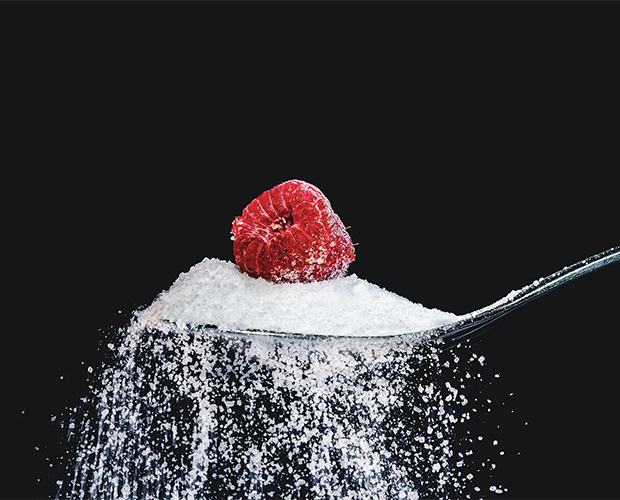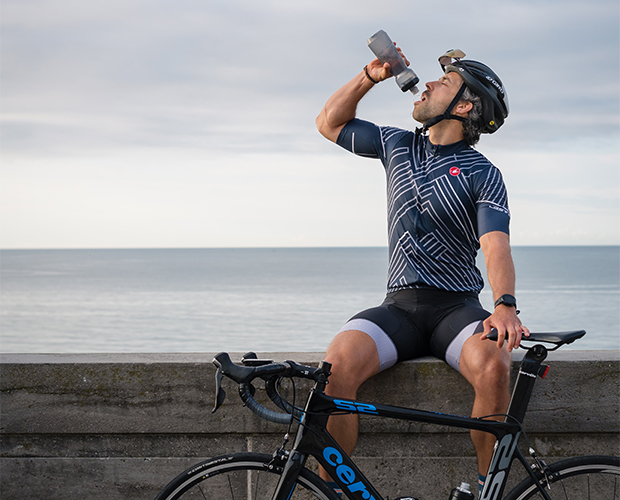How High is High Carb Fueling?

Is a high-carb fueling approach needed during all your training sessions? First maybe let’s get on the same page about what a high-carb approach might be. This debate about what to consume during training has raged on for decades. In 2010, we heard about 90 grams per hour. Or maybe it took a few more years for that information to leak its way off of landmark journal review articles and position stands on Slowtwitch’s forum, and out to your eyes and ears.
Flash forward a decade. Here’s a study examining ultra-marathoners using 120 grams per hour. Result: reduced muscle damage. Here’s one with increased exogenous carb usage comparing 120 grams per hour to 90 grams per hour. And here’s another paper finding that there isn’t (much) difference between tolerability of intake methods using 120 grams per hour.
Reminder: intake = consumption. Intake methods compared in the paper were gels, chews, liquid-only, and a mix of all three. Whether there is a difference or not, remains to be seen. While these papers mostly look at 2-3 hours duration activity, that’s predominantly due to research data collection challenges. Extending research exercise periods out beyond 3 hours becomes imposing on researchers and subjects, especially when you figure in familiarization sessions, control trials, sham or placebo trials, multiple test conditions, etc.

It’s not just papers from 2022 that indicate possible benefits from>100 grams of carbs per hour in training and racing. In case you don’t want to take my word for it, here’s a detailed review from 2017. And here’s a few studies finding relative tolerability before much was publicly known about glucose-fructose coingestion: all from before 2007.
So why only 10 years ago did we hear about 90g/hr? And why only now do we hear about 120g/hr? And only at a whisper level? That’s a story for another time. Try not to put your tinfoil hat on, and I’ll keep mine on the shelf for now, too.
What about women? All those papers only examined high carb intakes in men. And that matters. Women are indeed, not small men. Thank you to Dr. Stacy Sims, for pioneering & championing that phrase, which I’ll happily borrow. Dr. Sims, you are spot-on, and if you ever read this, please know I’m grateful for your contributions to this field. They’ve been nothing short of invaluable.
Thankfully, it’s not just men that appear to benefit from high carb intakes. While the research has been sparse in women, I’d posit that has more to do with sport and research culture and bias, than on gut or muscle physiology.
Beyond my wife Michelle, who, a competitive triathlete & cyclist at 138 pounds, routinely implements 110-130 grams per hour on her 5-hour trainer rides, or 90-100 grams per hour on her 20-hour road rides (2021 Festive 500 & 36,000ft on Mt. Lemmon), Chrissie Wellington reportedly consumed 105 grams per hour for her 5-hour bike leg at the 2007 140.6 Pro World Champs. She consumed this alongside some fat and protein, which probably limited her intake rate capability. Impressively high consumption rates for 2007.
In case you’re not familiar with how protein, fat, and fiber consumption affect your gut, the evidence is clear that it slows it down and reduces its capacity for absorption. if you’re intaking fat, fiber, or protein, alongside your carbs, your kcal total could have been higher if you stuck with just an optimal mix of carb intake instead.
Asker Jeukendrup, a household name in endurance sport nutrition and famed GSSI sport scientist & slowtwitch feature, championed much of the 90 grams per hour publicity. Despite this, it was his guidance that put Wellington onto 500 kcal & 105 grams of carbs per hour on the bike in preparation for her blistering marathons off the bike. Remember, that was 2007.
Given the last 15 years of improvements in learning what “optimal” approaches for intake might be, it’s a pretty open-shut case at this point that gut tolerability of>125 grams per hour is achievable for men and women alike.

Most regular folks can handle and benefit from 100-120 grams of carbs per hour, during endurance training or racing lasting longer than 3 hours. The research is plainly clear, those rates are often possible without much gut training. Often, no gut training is needed at all. If sodium and fluid intake are managed well, glucose:fructose ratio is right, and effort is not super pulsatile or stochastic (read: up and down and spiky), many folks can handle very high carb intake rates, without gut training. As in, not a world tour XCO MTB race.
Research is still thin for high carb research on longer-duration training and racing. Currently, all data point to an amplification of the performance enhancement caused by carbs when activities go beyond 4-5 hours.
I chatted about this amplified performance enhancement effect in a recent youtube-level rabbit-holing into Dr. Podlogar’s 120 vs. 90 paper. Skip ahead to my charts in the middle of the video, if you’re short on attention span, or time, or both.
With gut training, those numbers expand to probably more like 105-140 grams per hour for most folks. I have had a couple clients regularly use 150 grams per hour, and report they feel their best when they do that.
Does that mean that you ought to do this every session? That’s a discussion for the next one.





Start the discussion at slowtwitch.northend.network